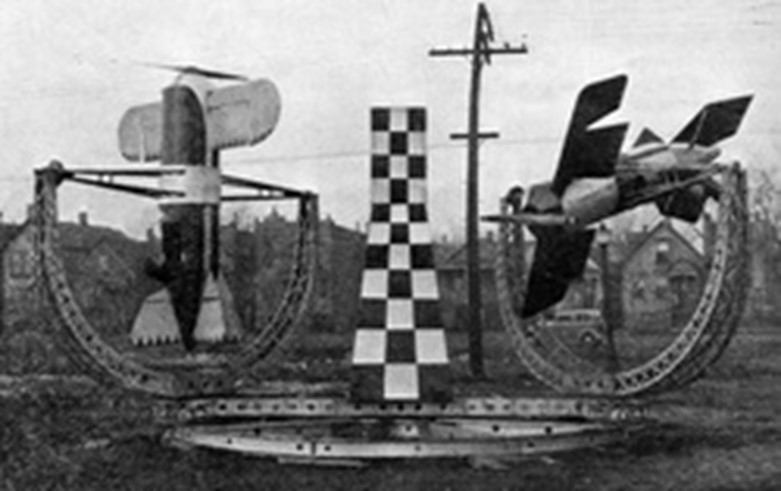Flight trainers preceded what we know today as the flight simulator. It replicates an aircraft cockpit to train pilots to fly on instruments or how to control technologically advanced aircraft. The flight trainer began as a device that looked more like a carnival ride than an instructional trainer. The earliest one seems to have been developed in 1910. Two half-sections of a barrel mounted and moved manually represented the pitch and roll of an airplane. The prospective pilot sat in the top section of this device, lining up a reference bar with the horizon. The early 1930s saw the development of several advanced flight trainers.
The Link Flight Trainer
In 1929, Edwin Link built his first airplane simulator and taught his brother to fly in it. Called the Pilot-Maker flight trainer, Link felt he developed the perfect device to help pilots learn to fly safely and inexpensively. Undoubtedly, a series of air accidents convinced the Army Air Corps that the Pilot-Maker proved to be an effective training tool. Subsequently, Link formed the Link Aeronautical Corporation to make a flight training affordable for everyone. He used the Pilot-Maker flight trainer in his own school.
Referred to as the Blue Box and Pilot Trainer, more than 500,000 U.S pilots learned piloting skills on Link simulators. The American Society of Mechanical Engineers designated the Link Flight Trainer as an Historic Mechanical Engineering Landmark. The Link Company is now a part of L-3 Communications and continues to make aerospace simulators.
During World War II, orders swamped Links’ factory. The military eventually used this trainer to teach wartime instrument flying, aerial gunnery, and bombing. In addition, navigation, automatic pilot and radar operation skills were taught. Link’s advanced gunnery and navigation trainers led to the first jet bomber simulator after World War II.
Ace-of-the-Air Flight Trainer
The Ace-of-the-Air flight trainers developed in 1934 proved more novel than the Link flight trainer. The Ace-of-the-Air provided actual training in miniature ships with a full three-plane platform. The pilot rolled, looped, spin, and perform all of the standard airplane maneuvers. The single-seat planes hung within a gimbal, free to rotate around their own axis. At the same time, the airplane moved around the central pylon on a circular track. By applying the ailerons the plane rolled over with a collar that embraced the fuselage. Running the ship around a circular track gave the effect of forward speed. The rudder provided vertical movement. Perfectly simple and perfectly safe!

